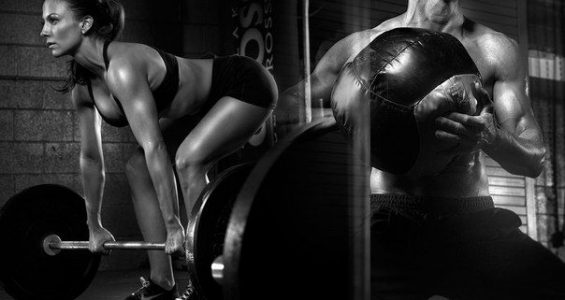ALL ABOUT THE DEGRESSIVE SERIES IN BODYBUILDING
Slide bodybuilding is a fairly popular intensification technique . Unfortunately, they are often used in non-strategic ways and therefore slow down progress, see above. Other questions arise about their use.
For example, should you do your best to build muscle? Are you going to fail, that is, until the last possible repetition and further with the use of degressive streaks in bodybuilding?
Is it possible for us to recover from this knowing that the session should not be viewed in a unique way, but as a whole, which we call a program? (I explain what I think are the best bodybuilding programs in this article.) This is the reason for this article. Should we, yes or no, do bodybuilding series?

Defining Degressives Bodybuilding
A decreasing row in bodybuilding consists of performing one or more successive dumps after the desired number of reps has been achieved.
For a example we’ll do 10 reps of 100kg on the bench press, then continue without rest, time for weight loss, 10 reps of 70kg. It may look like a superset (see this article), except that it is performed in the same exercise.
Of course, you can continue one or more digits after the first, depending on what exactly you want to do. Some “experts” like to push this to a climax by unloading until the bar is empty. In these conditions, it is difficult to create a second series without an unjustified recovery time. Essentially, they are used to summon a stronger Inroad (attack on strength) and great muscle fatigue.
Benefits of decreasing bodybuilding streak
As with any technique, it is important to consider the advantages / disadvantages ratio before introducing any technique into your training program. No technique, like any exercise or training strategy, has any advantages. This is why it is important to step back and analyze what we are doing in order to find the best compromise for ourselves, knowing that nothing is and will never be perfect.
When it comes to the benefits of shrinking streaks in bodybuilding, they are multiples in theory. The first is that they decrease training volume, that is, the number of series per muscle. Indeed, the more forces, the less you can do from a quantitative point of view.
This is an advantage, especially with regard to the wear and tear on our tendons and joints, which in the long term become a limiting factor in our progress with age. By doing less, we “longer”, thus longer, provided that we do the right exercises for ourselves in accordance with his morpho-anatomy (I talk about this in detail here) and do not impose “impossible angles.
Second has to do with the fact that decreasing streaks in bodybuilding shorten training time. Because we do less, it takes less time, which can be interesting if we have little time to learn. In a world where many of us are running after this, this is a big advantage.
The third is that, in theory, the more effort you put in, the more adaptation should be, that is, an increase in muscle mass and strength compared to the effort being made. This is the theory “ The better the better “. The more I force, the more I have to take. But what about when you practice doping-free bodybuilding? Is this law really applicable?
Why am I against it?

This balance must be found between the three factors of muscle hypertrophy , such as mechanical stress, metabolic stress, and progression, which are detailed in this podcast:
Beyond a certain intensity defined by Inroad, we eventually can no longer recover, and instead of progressing, we end up stagnating, we see regress .
Unlike PTO, the increase in load that we lift has almost unlimited potential, only picked up by aging, our recovery potential has less potential for development and is extremely determined by our sports history, made in childhood and adolescence.
It is also the foundation that I include as the defining muscle potential in the long term. Also, decreasing training volume is not necessarily desirable as there is an ideal training volume for each muscle, a trade-off between workloads, repetitions, and series per muscle so that you can progress with each session.
Based on peak intensity priorities, in my experience it is no longer possible to do enough workouts. Intensity is certainly important, but should not be seen as the only factor for building muscle.
In the absence of enough exercise and exercise, muscle growth is limited , excluding progress in the medium to long term. Indeed, in order to maximize yourself during a session, how can you be more successful in the next session and then in the next session?
Of course, in the short term this can lead to an objective progression, in the medium and long term this is a mistake and ignores the concept of margin (additional explanations), which is important to my eyes. A session is part of a whole and should not be seen as unique and independent of previous and future sessions. Therefore, we must coerce, but not too hard and not particularly carefully in every session.
In addition, depending on the type of exercise, the decreasing series in bodybuilding does not have the same punch muscles. Thus, if used in multi-joint exercise, they will increase the fatigue of the secondary muscles, which are already in most cases the limiting factors of our exercise series.
For example, if we are doing a series of bodybuilding exercises with a bench press, there is a high probability that, in addition to all morpho-anatomical representations, the triceps is a limiting muscle. exercise at the expense of the muscles of the chest, for which the exercise was performed at the base.
You should be aware that various factors affect muscle gain, including load, reps, speed, exercise order …
You can read more about this in my article on EMG in bodybuilding. Conversely, if they are used in isolation exercises, they will continue to localize in the muscle that you want to get by doing this exercise, which may be a good moment, but I do not recommend due to the ineptness of “Harder”.
Descending streaks can also be like the long streaks , which we have seen in this article as an increasingly useful “weapon” as we progress to continue to build muscle while reducing the risk of injury.
However, I not recommend to use the same repetition range depending on the exercises and their morpho-anatomy (you can see my recommendations here). Anything that can work on one exercise, and in particular on one muscle, rarely works on another at an advanced level. I do not recommend using degressive streaks in bodybuilding in most cases, but they can be useful , especially in one case – when working on weaknesses.
Indeed, in most cases, weaknesses suffer from hiring problems to the detriment of strengths, and then the motor training phase must be .
In each exercise, a kind of recruiting competition is held between the different muscles involved, during which the strong point almost always ends in victory when pressed. Then you have to go through the learning phase of the “set”, which can only be done in long series, from very long to 100 reps.

This is the technique I used with efficiency, especially on my shoulders, who were late then (I talk about this in detail in this book) and which are no longer today today.
In this sense, diminishing streams in bodybuilding can resemble long and heavy streaks thanks to successive shocks and be effective in this regard in isolation exercises so as not to give the impression that they are blowing in the air. during the first 30-40 repetitions of a series of 100, without changing the effectiveness of this training.
Thus, the payoff will be rather psychological , but since everything is connected, it can be foreseen. If you ever want to learn more about overcoming weaknesses, you can read this article.
Conclusion
Degression streaks in bodybuilding are often used for no particular reason , despite common sense. That’s why instead of speeding up the process, it slows it down.
Aside from addressing the weak points and, if necessary, to have some fun at the end of the workout to leave the most overwhelmed possible of his session, they have no interest in a non-doping bodybuilding practitioner wanting to progress as quickly as possible. I hope I helped you see more clearly.
